If you're serious about your yoga practice, then choosing the right yoga mat is essential. A good yoga mat can enhance your practice, provide comfort, and offer the support you need during various poses.
Choosing a mattress that does not suit you or is uncomfortable can harm the enjoyment of the practice and even cause injuries. If the mattress does not allow a proper grip or slips, it will be difficult to stabilize and take root in the positions.
With a wide variety of options available, it can be overwhelming to know which one is best for you. However, considering factors like size, thickness, material, and grip, you can find a mat that suits your needs perfectly.
In this guide, we’ll explore these factors in-depth to help you make an informed decision when choosing your yoga mat.
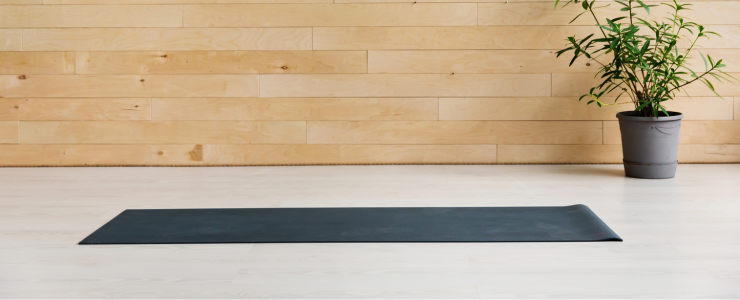
1. Size
When it comes to yoga mats, one size doesn’t fit all. Most standard yoga mats are around 68 inches (173 cm) long and 24 inches (61 cm) wide. For many people, this is a comfortable size. However, if you’re taller than 6 feet (183 cm) or simply prefer more space to move freely during your practice, you’ll want to consider mats that are longer or wider.
Yoga mats also come in extra-long versions, typically ranging from 72 inches to 84 inches (183 cm to 213 cm) in length, giving taller individuals more room to stretch out fully during poses like Savasana (corpse pose) or downward-facing dog. Wider mats can also offer more space for those who feel confined on a standard mat or who perform larger movements during their practice.
While larger mats provide extra space, keep in mind that they can be bulkier and heavier, which might be inconvenient if you're carrying your mat to and from a yoga studio.
Tips:
- If you're taller than 6 feet, opt
for a longer mat (at least 72 inches).
- If you prefer more space around
you while practicing, consider an extra-wide mat.
- If portability is important, balance size with weight (we'll get to that next).

2. Weight
Weight is an often-overlooked aspect when buying a yoga mat, but it can be crucial depending on how and where you practice. If you practice at home, the weight of the mat may not matter much. However, if you frequently carry your mat to a studio, gym, or outdoor classes, then you'll want something light enough to transport easily.
Lightweight yoga mats typically weigh between 1 to 1.6 kg, making them easy to carry in a yoga bag or backpack. These are often thinner mats that prioritize portability over cushioning. On the other hand, thicker mats can weigh between 2.5 to 3kg or more. While heavier mats offer greater cushioning and stability, they can be cumbersome to carry around.
If you typically used to carry your own mat to classes at different locations, make sure to choose a mat that is not heavier than 2.6 kg max.
If you travel a lot, a travel mat might be ideal. These are ultra-lightweight mats that can even be folded to fit inside a suitcase. However, they often sacrifice thickness and durability for convenience.
Tips:
- If you carry your mat to class
frequently, look for lightweight options (2-3 pounds).
- For home practice or stability
during intense sessions, a heavier mat can provide better support.
- For travelers, consider foldable travel mats that are light but offer basic cushioning.
3. Thickness
Yoga mats come in a variety of thicknesses, which affects how they feel under your body during practice. Thicker mats generally offer more cushioning, making them ideal for people with sensitive joints, back pain, or those who practice on hard surfaces. Thicker mats typically measure around 6mm to 8mm (or more), providing extra padding and support, especially for poses like camel pose (Ustrasana) or during long meditative sessions.
However, thick mats aren’t always the best choice for every type of practice. For more dynamic forms of yoga, such as Vinyasa or Ashtanga, a thinner mat (typically around 3mm to 4mm) may offer better stability. Thinner mats allow you to feel more connected to the ground, which is crucial for balance in poses like tree pose (Vrikshasana) or warrior III (Virabhadrasana III).
If you’re new to yoga and unsure of which thickness to choose, a mat in the mid-range (4mm to 5mm) is usually a safe bet. It provides a good balance between comfort and stability, suitable for most styles of yoga.
Tips:
- For joint support or floor
exercises, opt for a thicker mat (6mm+).
- For balance-focused or fast-paced
practices, a thinner mat (3mm-4mm) may work better.
- If unsure, go for a mid-range mat (4mm-5mm) for versatility.

4. Material
Yoga mats come in various materials, and each one has its advantages and disadvantages in terms of grip, durability, eco-friendliness, and cost. Choosing the right material depends on your priorities and the type of yoga you practice. Here are some common materials used in yoga mats:
- PVC (Polyvinyl Chloride): One of the most common
materials used in yoga mats, PVC is known for its durability and excellent
grip. These mats can last for years, making them a popular choice for
frequent practitioners. However, PVC is not eco-friendly and may contain
harmful chemicals. It can also become slippery when wet, so if you tend to
sweat during practice, this might not be the best option.
- TPE (Thermoplastic Elastomer): TPE mats are a more
environmentally friendly alternative to PVC. They are lightweight,
flexible, and offer good grip and cushioning. However, they may not be as
durable as PVC mats, especially with heavy use.
- Natural Rubber: Rubber mats are a great
eco-friendly option, made from sustainable materials. They offer excellent
grip, especially for people who sweat a lot, making them a top choice for
hot yoga. The downside is that they can be quite heavy, and some people
may find the smell of rubber unpleasant. Additionally, they may not last
as long as PVC mats if exposed to intense use.
- Jute and Cotton: These natural fiber mats are
breathable, biodegradable, and eco-friendly. Jute mats are textured and
provide good traction, but they tend to be less cushioned than other
materials. Cotton mats are soft and absorbent but can become heavy when
wet. Both options are great for those who prefer natural materials but
might lack the comfort and durability of synthetic options.
- Cork: Cork mats are another eco-friendly choice, known for their anti-microbial properties and non-slip surface. Cork actually provides better grip as it gets wet, which makes it ideal for hot yoga or intense practices. While durable, cork mats can be heavier and more expensive than other types of mats.
Tips:
- If durability and grip are top
priorities, a PVC mat might be a good option.
- For an eco-friendly and
lightweight choice, consider TPE or natural rubber.
- If you have sweaty hands or
practice hot yoga, go for cork or rubber for better grip.
- If sustainability is a concern, look for mats made from renewable resources like cork, jute, or cotton.

5. Color
At first glance, the color of your yoga mat might seem like a minor detail, but it can actually have an impact on your practice. Yoga is not just about the physical postures but also the mental state it helps you achieve. Your mat is your personal space during practice, and having a color that resonates with you can help enhance your experience.
Some people choose colors that align with the chakras (energy centers in the body), while others simply pick a color that makes them feel calm or energized. For example, blue is often associated with calmness and relaxation, while bright colors like orange or yellow can evoke feelings of energy and creativity.
Tips:
- Pick a color that resonates with
your personal energy or style.
- If you want to align with
specific chakras, consider colors like red (root), orange (sacral), yellow
(solar plexus), green (heart), blue (throat), or purple (crown).
- Keep in mind that lighter-colored mats may show dirt and wear more easily than darker-colored ones.
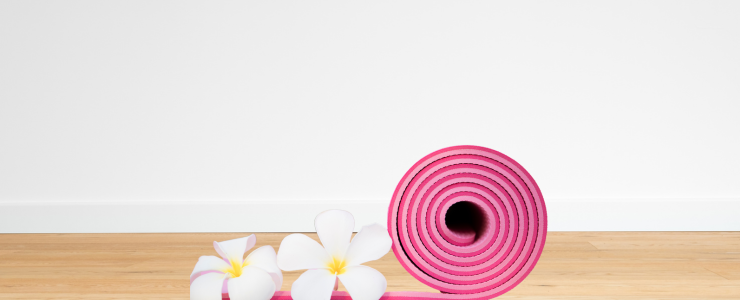
6. Durability
If you’re someone who practices yoga daily or several times a week, you’ll want a durable mat that can withstand frequent use. The durability of a yoga mat depends largely on its material. PVC mats, for example, are known for being extremely long-lasting, even after years of regular use. They resist wear and tear well, making them ideal for those looking for a mat that can handle heavy-duty practice.
On the other hand, natural rubber, cork, and TPE mats, while eco-friendly, may not last as long as PVC mats. Rubber mats can degrade over time, especially if exposed to direct sunlight or stored in a humid environment. Cork mats, while durable, can crack or wear down if not properly cared for.
Tips:
- For heavy use, consider PVC or
synthetic rubber (NBR) for their long-lasting durability.
- If you want an eco-friendly
option, keep in mind that natural materials like rubber or cork may wear
out faster, but they’re better for the planet.
- Regularly clean and store your
mat properly to extend its lifespan.
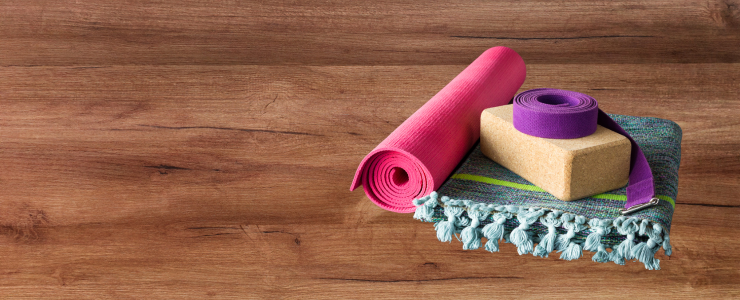
7. Grip
Grip is one of the most important factors in choosing a yoga mat, especially if you tend to sweat during practice. A mat with good grip will prevent slipping, giving you the stability needed to hold poses confidently.
If you practice hot yoga or other vigorous styles, look for mats made from materials like rubber or cork, which naturally provide better grip as they absorb moisture. Mats with textured surfaces can also help improve traction, preventing your hands and feet from slipping even during intense poses.
For those who prefer a more traditional practice with minimal sweating, a smooth PVC or TPE mat might be sufficient, but be cautious as some of these can become slippery when wet.
Tips:
- If you sweat a lot, opt for mats
made from materials like natural rubber or cork for better grip.
- Mats with textured surfaces can
offer extra traction, even in sweat-heavy practices.
- Avoid smooth surfaces if you’re
practicing hot yoga, as they can become slippery.
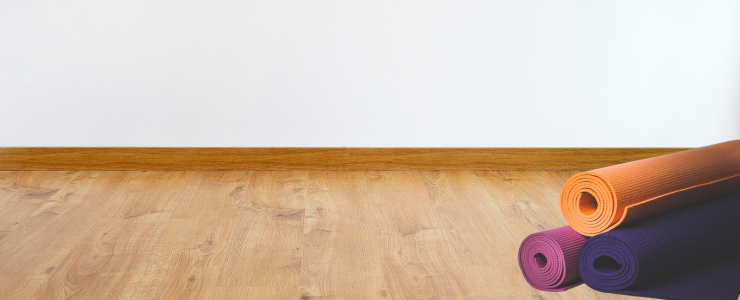
8. Brand Recommendations
Different brands offer various features, qualities, and aesthetics for their yoga mats. Here are a few popular brands that many practitioners swear by, including those you may want to consider for your purchase:
Best Yoga Mats For Every Practice Level
9. Price
Yoga
mats range widely in price, from budget-friendly to high-end luxury mats.
Generally, PVC mats are the most affordable, while natural rubber and cork mats
tend to be more expensive. Keep in mind that a higher price often reflects better
quality and durability.
It's okay to invest in a high-quality mat if you practice regularly. However, if you're just starting out, a more affordable option might be a better choice until you figure out what you like.
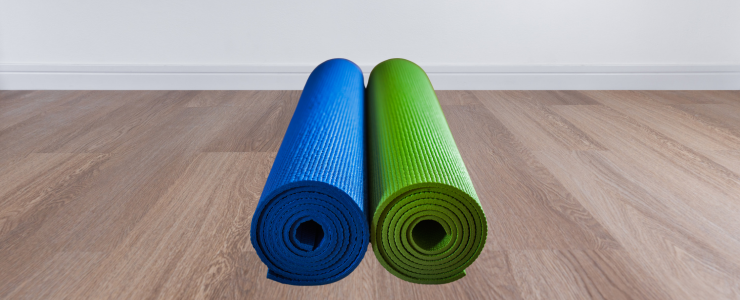
Conclusion:
In the end, the best yoga mat for you is the one that aligns with your personal preferences and needs. Whether you prioritize eco-friendliness, grip, portability, or thickness, there's a yoga mat out there that will support your practice and help you feel comfortable on the mat. Take your time to evaluate your needs based on the factors discussed in this guide, and don’t hesitate to try out different mats until you find the one that feels just right for you.
Remember, your yoga mat is more than
just a tool; it’s your personal space for growth, relaxation, and
self-discovery. Happy practicing!
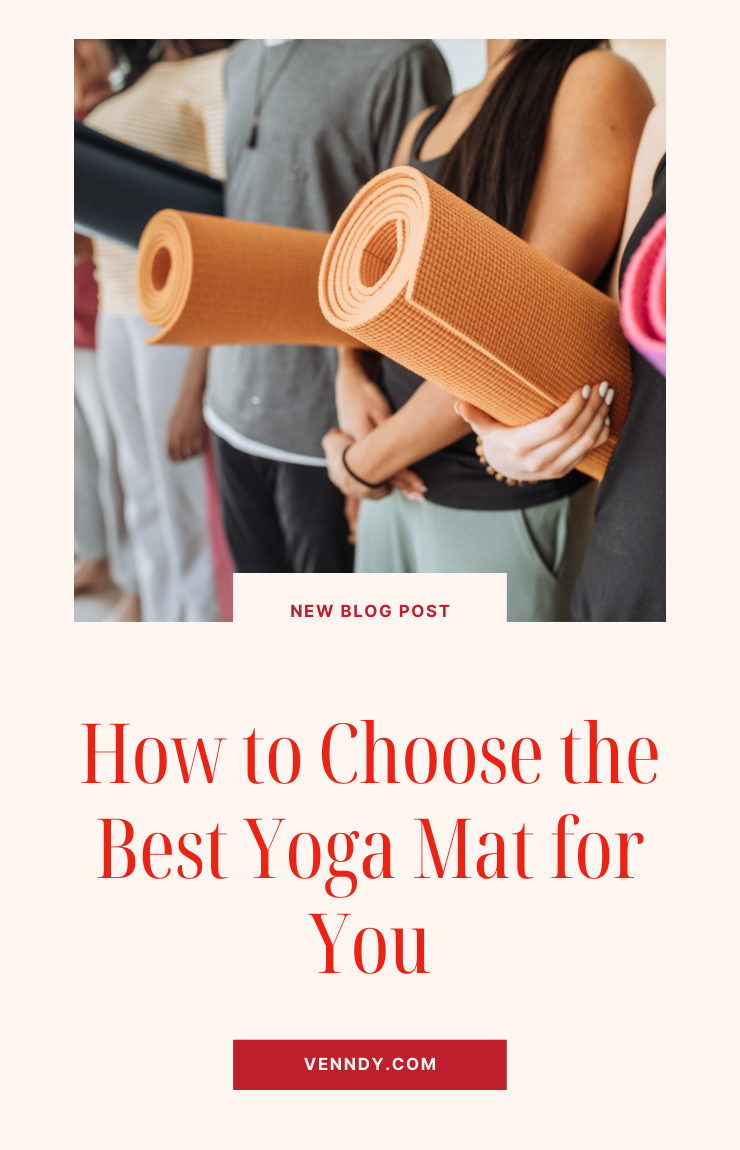
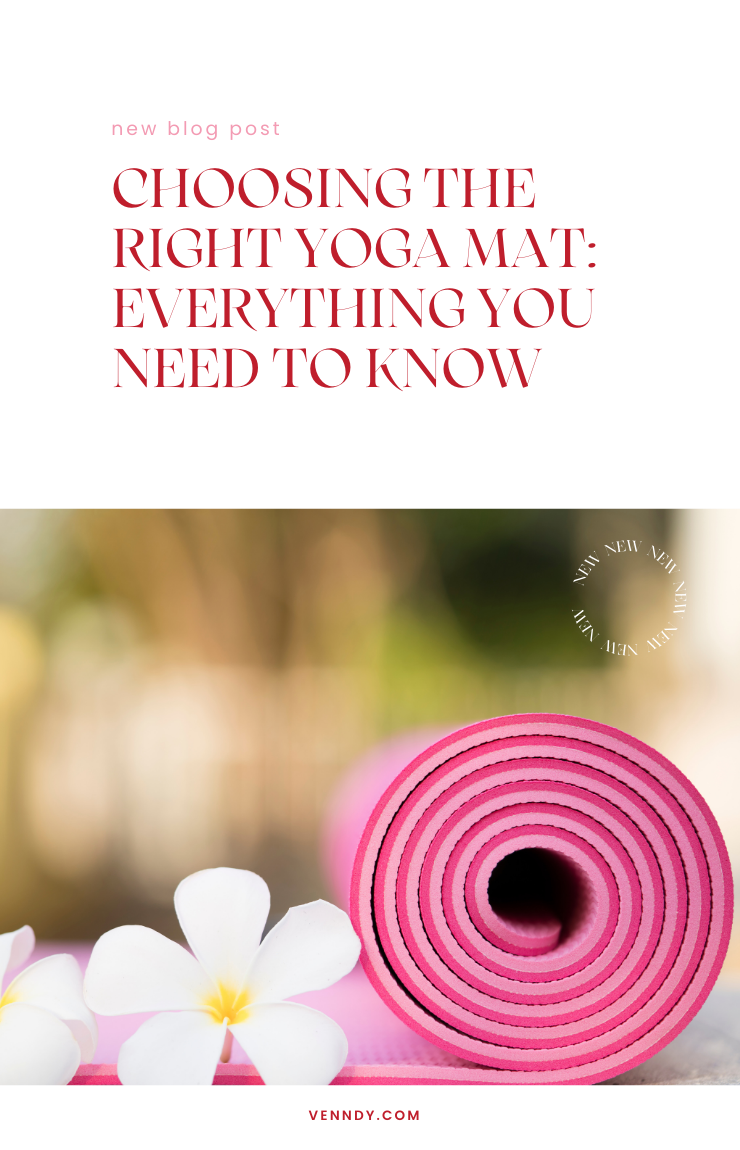
.png)

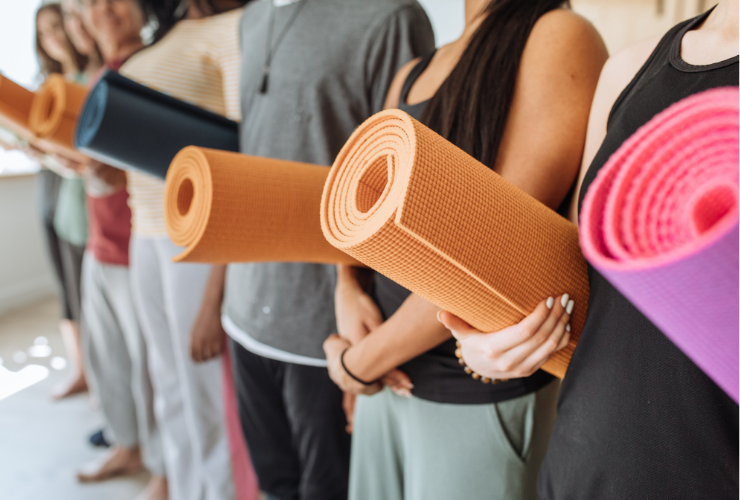




You can choose to comment as a guest.